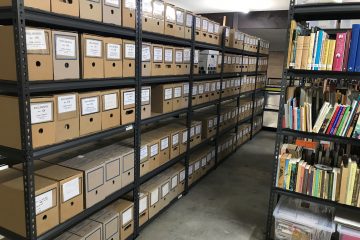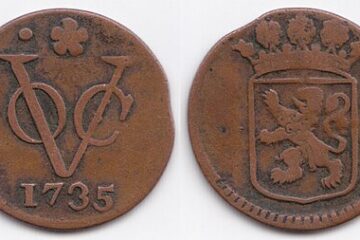Introduction
The Netherlands Forces Intelligence Service (NEFIS) was a Dutch military intelligence service during and after World War II. The purpose of the NEFIS was initially to collect intelligence for the Allied forces with regard to the Netherlands East Indies (NEI) that was occupied by Japan. It operated from Melbourne and later from Camp Columbia in Brisbane. NEFIS was eventually given its own clandestine operations unit, dubbed the Korps Insulinde. After the war in Indonesia, back in the Netherlands Korps Insulinde grew into today’s modern Korps Commandotroepen.
Navy and Army Intelligence Service – 1941
The service originated in 1941 when the Dutch naval commander Vice-Admiral C.E.L. Helfrich sent a liaison officer to the Australian Commonwealth Naval Board in Melbourne. This officer, captain-lieutenant-at-sea G.B. Salm, was also engaged in intelligence work. He then gathered around him a number of persons who specialized in intelligence work. His organisation was given the name Navy and Army Intelligence Service. When Japan invaded the NEI in February 1942, a number of prominent and high-ranking authorities of the NEI Government were already ordered to move to Australia. This included a number of staff officers of the Royal Netherlands East Indies Army (K.N.I.L.), including Major Jhr. J.M.R. Sandberg, captains Dirk Cornelis Buurman van Vreeden, G.L. Reinderhoff, S.H. Spoor and H.J. de Vries. Later, lieutenant colonel N.L.W. van Straten, from Timor, and captain of the military police F. van der Veen would also be added.
NEFIS – Australian period: 1942-1945
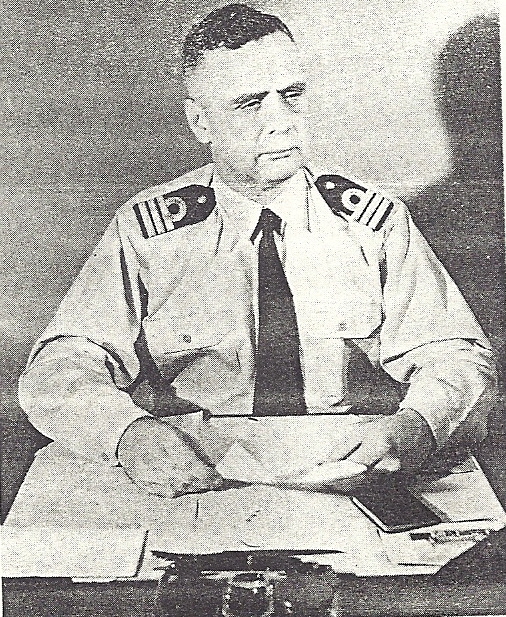
In 1942, the name Netherlands East Indies Forces Intelligence Service (NEFIS) arose because the contacts with the other Allied staffs all had English as their working language and the Dutch name was not considered practical. They also needed a clearly legible letterhead. In contacts with the Allied allies, this organisation was henceforth further referred to as the Netherlands Forces Intelligence Service.
The start-up phase of NEFIS was problematic. The Dutch authorities wished to cooperate as much as possible with the Allies and in particular its Commander-in-Chief General Douglas MacArthur. However, the Dutch branch within the collected intelligence services (which had to cooperate under the established the Allied Intelligence Bureau) A.I.B), was barely able to provide important information and/or contributions in the short term, since one had to start with virtually nothing.
Here the years of neglect regarding the establishment of a professional intelligence service before the outbreak of the war retaliated. In the period April 1942 – April 1943, the NEFIS suffered enormous pressure to come up with results. The American general staff was especially in urgent need of geographical and topographical information about the NEI, in particular New Guinea.
In April 1943 the NEFIS was reorganised. This was the official (re)start of the NEFIS. Now that the various Allied intelligence services were bundled and directly under the command of the head of the intelligence section ‘G2’ of the general staff of General Douglas MacArthur, major general Charles Willoughby, the NEFIS was also increasingly able to connect with the growing demand of the Allied high command, although still had to work with structurally insufficient resources and people.
Staffing
Major Simon H. Spoor (KNIL) was Assistant Director and headed General Intelligence. Lieutenant-Commander J.A.F.H. Douw Van der Krap headed Security. NEFIS moved into several houses along St Kilda Road, Melbourne to be close to both Salm’s HQ and the Australian Army HQ at Victoria Barracks. The mapmakers were housed in Domain Road, South Yarra. The maps were used in NEI bombing raids or planning future operations. In 1944 NEFIS moved to Camp Columbia in Brisbane”.
NEFIS obtained about 50 Korps Insulinde troops from Ceylon. They already had intelligence training, having attended a Special Operations Executive (SOE) camp at Kharakvasla, India. Of the remaining Korps Insulinde members in Ceylon, 40 men were chosen to serve under Major Mollinger in the NEFIS equivalent for the India Theatre.
NEFIS recruitment continued in Australia. A NEFIS mapping unit employed Australian female sketch artists. In late 1942, Sergeant-Major H. De Haas (KNIL), Edward Danus (KNIL) and Coenraad Donald Schlette (Customs Inspector) escaped from Java. Due to their detailed intelligence information, NEFIS wanted them. NEFIS was now organised into two sections: General Intelligence and Security. Salm was NEFIS Director.
Tasks and organisation
The NEFIS was now given the following clearly defined tasks, divided into three sections:
- (Section I) Collecting, processing and distributing all intelligence concerning the NEI that may be important for warfare (Operational Intelligence, Interrogation, Geographical Intelligence, Intelligence Summaries, Topographical Registry and Information, Photo Interpretation, Press review, Research)
- (Section II) The concern for security of the Dutch armed forces in Australia (Security)
- (Section III) Obtaining intelligence in a special manner and carrying out “Special Operations” (Command missions in enemy territory).
Section I was now led by Major Spoor (assistant director), Section II by Ltz Douw van der Krap (assistant director) and III by Ltz J. Quéré (assistant director). The latter would be succeeded in August by Ltz L Brouwer.
(Ltz = Luitenant ter Zee = Lieutenant Commander)
At the beginning of the war, the NEFIS was exclusively concerned with obtaining information from the Netherlands East Indies (NEI) occupied by the Japanese (Section I). Later, espionage and sabotage actions were also added, which were carried out by agents also called ‘parties’, which were dropped into occupied territory with the help of aircraft and submarines (section III). These commando units have had an extremely difficult time, and many did not return from their missions in the first period.
The NEFIS had greatly misjudged the newly created situation in the occupied territories. In the meantime, the Japanese had set up a large espionage network and made extensive use of the resurgent nationalist sentiment among the Indonesian population, which cooperated with the Japanese. Once a commando had landed on occupied territory, the chance of betrayal was very high, which was therefore common. For the sent commandos who were captured, it actually meant (after torture) a certain death penalty.
Within the NEFIS as well as among the political leadership of the NEI committee, there was great turmoil about the actions to be carried out. ‘Parties’ were also dropped on New Guinea in which Captain F. van der Veen was involved.
Korps Insulinde – Special Forces
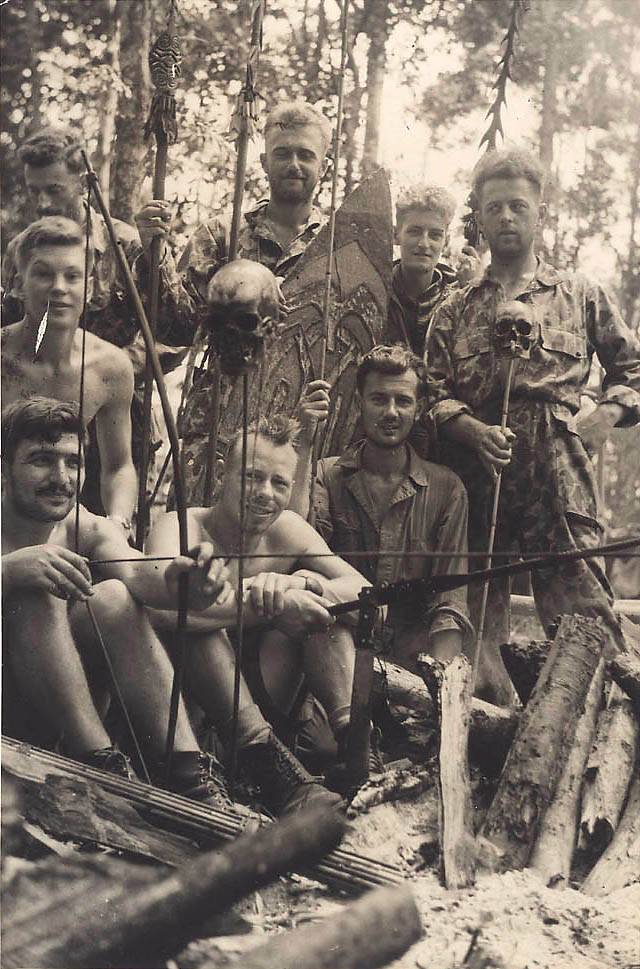
| NEFIS was eventually given its own clandestine operations unit, dubbed the Korps Insulinde. Drawn initially from 150 men of the 1st Battalion, Koninklijke Brigade “Prinses Irene,” which had trained in England in 1940-41 then had been shipped to the Pacific, arriving at Ceylon just after the fall of Java. They were stranded in Ceylon and grew increasingly frustrated of doing nothing. Finally on 1 August 1942 a special commando unit was established named Korps Insulinde, who underwent guerrilla training. From June 1943, 38 men of the Insulinde Corps concluded the training and were ready for commando actions in the NEI. They were added to NEFIS Section III. Also in 1944, Section I sent Major GL Reinderhoff to the staff of U.S. General Walter Krueger of the 6th U.S. Army, who had also landed on New Guinea in the meantime, to assist the Americans on the spot in planning future landings. These Free Dutch went commando quite literally, and served alongside the SOE’s Force 136 Intelligence in the region. Ultimately, No. 2 (Dutch) Troop of the No. 10 (Inter-Allied) Commando (also came out of the Koninklijke Brigade “Prinses Irene”) would contribute volunteers to the enterprise as well. In all, the Korps Insulinde would muster no less than 36 teams made up of 250 agents. They made 17 landings in Sumatra alone in 1943-44, in addition to operations in Borneo, the Celebes, New Guinea, and Java. After the war a new Special Force unit was established to fight against the Indonesian freedom fighters. Known as Korps Special Troops they operated in the Netherlands East Indies from 1946 till 1950. |
Move to Camp Columbia, Brisbane
Following the establishment of the Netherlands East Indies Government-in-Exile in Camp Columbia, Wacol, Brisbane in June-August 1944, the NEFIS was further expanded and three sections were added:
- (Section IV) Military Intelligence: (M.I.)
- (Section V) Civil affairs Intelligence
- (Section VI) Technical Photo Service (T.P.S.)
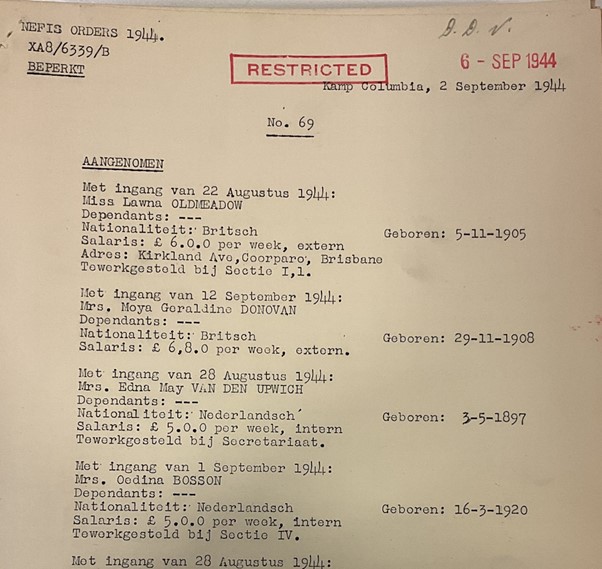


In the meantime, the NEFIS strength had grown to more than 300 men and women, not including navy and civilian personnel. Lieutenant-Colonel S.H. Spoor was now appointed as the new director of NEFIS. Section I was commanded by Major G.L. Reinderhoff, Section II under Lieutenant-at-Sea J.C. Smit, Section III under Lieutenant-at-Sea A.A. Fresco, Section IV under Lieutenant-Pilot-at-Sea J.H. Perié, Section V under Dr. G.W. Locher. Section VI was not yet operational. The organisation of the NEFIS was now prepared for the expected invasion of Java and the other territories of the NEI.

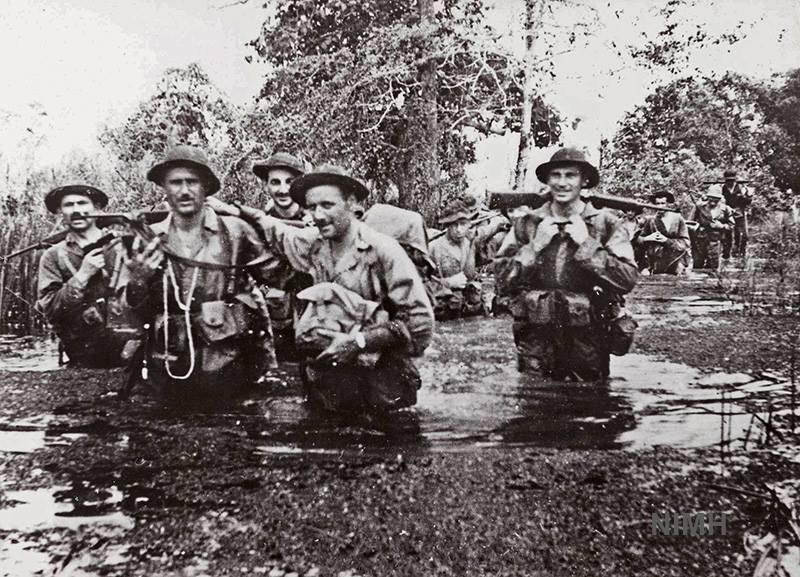
Some of the NEFIS operations
Most of these operations were combined operations mainly with Australian but some also with US personnel.
These maps and other reports on operations as shown below are from the following document: The Official History of the Operations and Administration of Special Operations – Australia (SOA), also known as the Inter-Allied Services Department (ISD) and Services Reconnaissance Department (SRD) Volume 2 – Operations – copy no 1 [for Director, Military Intelligence (DMI), Headquarters (HQ), Australian Military Forces (AMF), Melbourne]. Source National Library of Australia. I had to select those relevant pages from the document that were still readable.
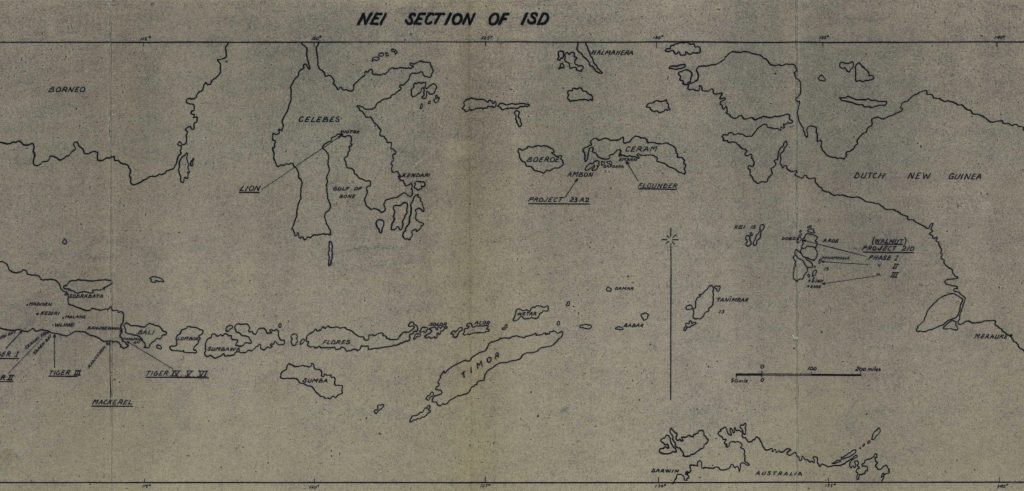
Operation Flounder
A NEFIS-III party Flounder was landed by a submarine on the south coast of Ceram on 31 December 1942, but the eight members (including Captain Nijgh and Sergeant J. Malawau) of the group were arrested by the Japanese the next day. They were taken by boat to Ambon and imprisoned at Fort Victoria. At least two where executed.
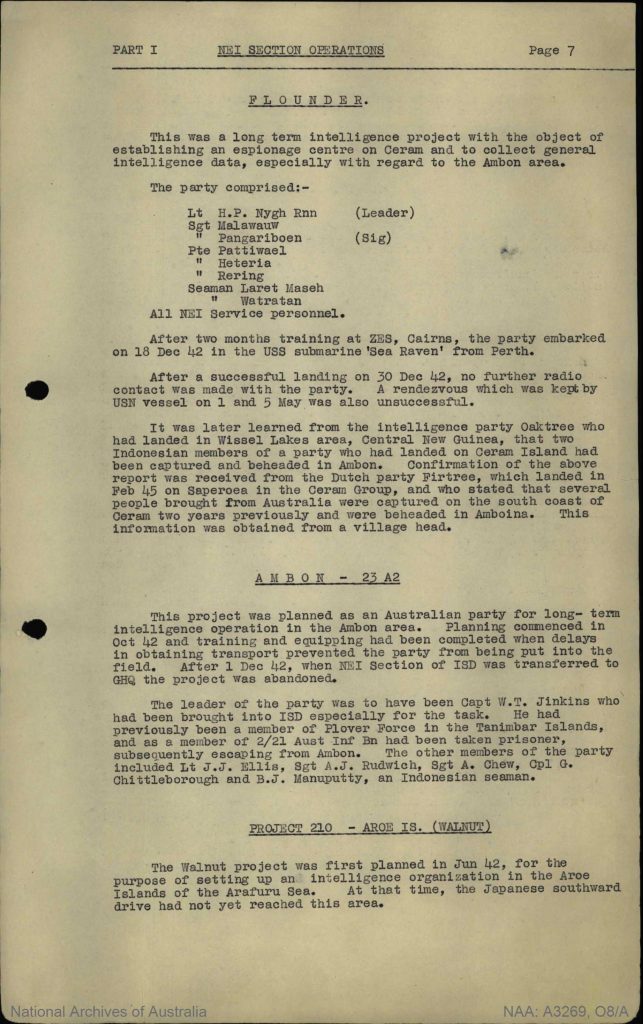
Operation Firetree

First Lieutenant Julius Tahija led the NEFIS-III party Firetree in February 1945. This party consisted of ten men and was intended to obtain general and military information about Ambon and surroundings, to make observations about Japanese ship and aircraft traffic and to draw up weather reports. The group departed from Australia by the Dutch submarine K XV and set sail for Mangoli. Tahya disembarked here with five others but decided to return to Ambon due to a lack of good landing places for unloading goods. On September 12, he landed with his men on the east coast of Saparoea and then decided to return to Australia; all in all, this mission provided valuable information.
Operation Whiting
Party Whiting was an espionage operation in 1943 in which Sergeant Thijs Staverman and Sergeant Leonard Siffleet from Gunnedah were sent to New Guinea together with the Ambonese corporals M. Raharing and H. Pattiwael. The group split up into two parties codenamed “Whiting” and “Locust”. Whiting Party set out for the Hollandia area, while Locust Party continued to operate in the area south and southeast of Aitape. Those involved did not survive the operation, three were beheaded.

Operation Tiger
Operation Tiger was divided in sic teams (I-VI) they all operated on the island of Java between November 1942- July 1943. Ten 10 men landed in six different teams. It is thought all members were captured and shot as none were seen again.
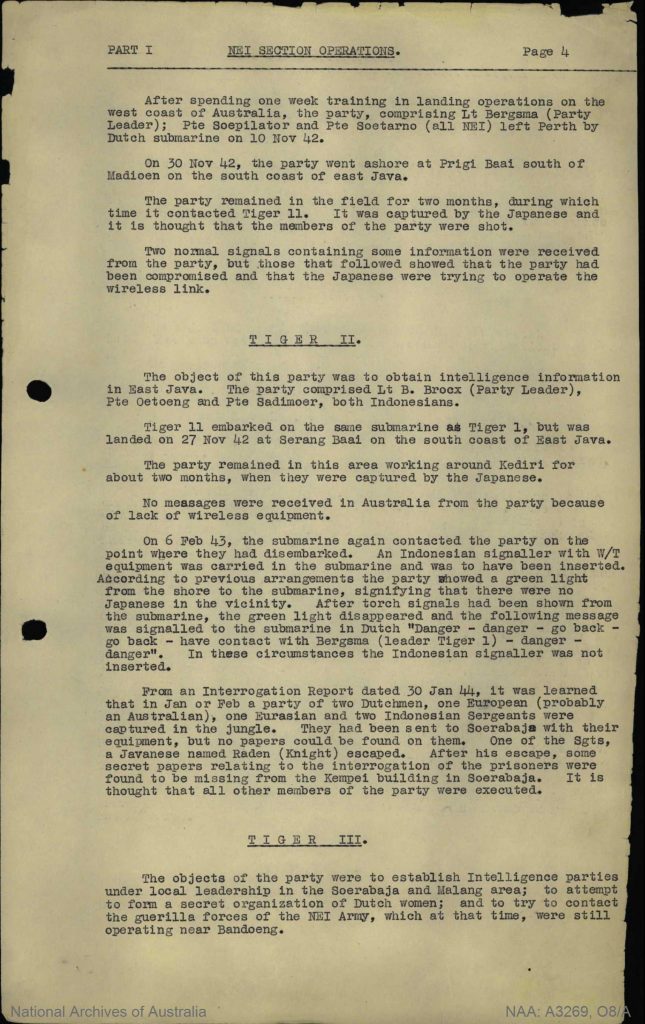
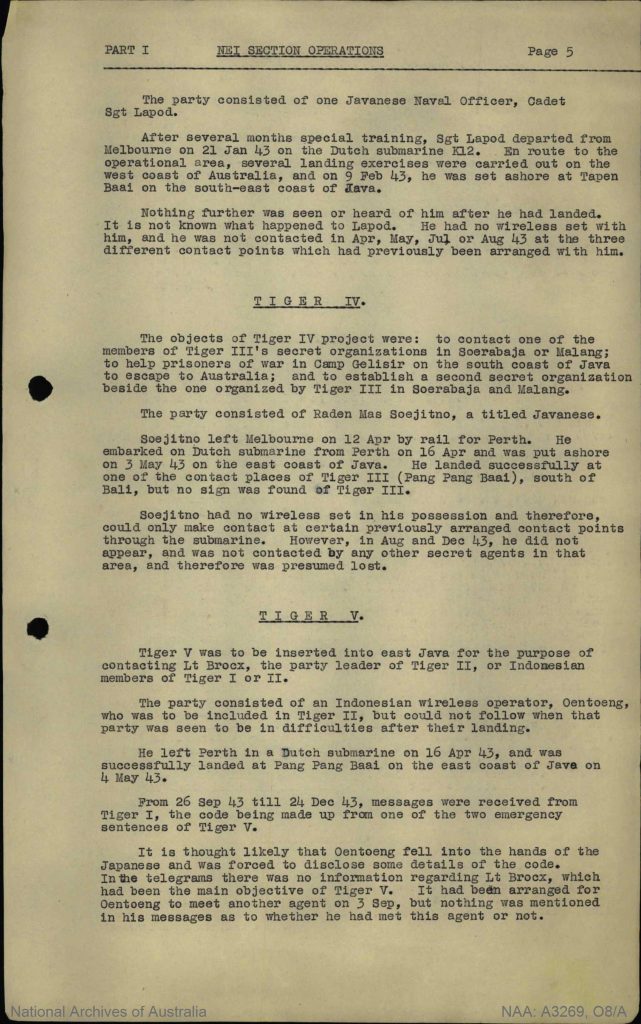

Operation Walnut
Operation Walnut took place in three phases on the Aroe Islands:
Walnut I – a party of two landed in July 1942 and returned in September.
Walnut II – party of two landed in February 1943 and captured August, presumed killed.
Walnut III – On 12 July 1943 a reconnaissance patrol consisting of ten, WALNUT III was inserted on Djieo, a small island north of Enoe Island, using Hoehn military foldboats. Their fate is unknown, presumed killed.
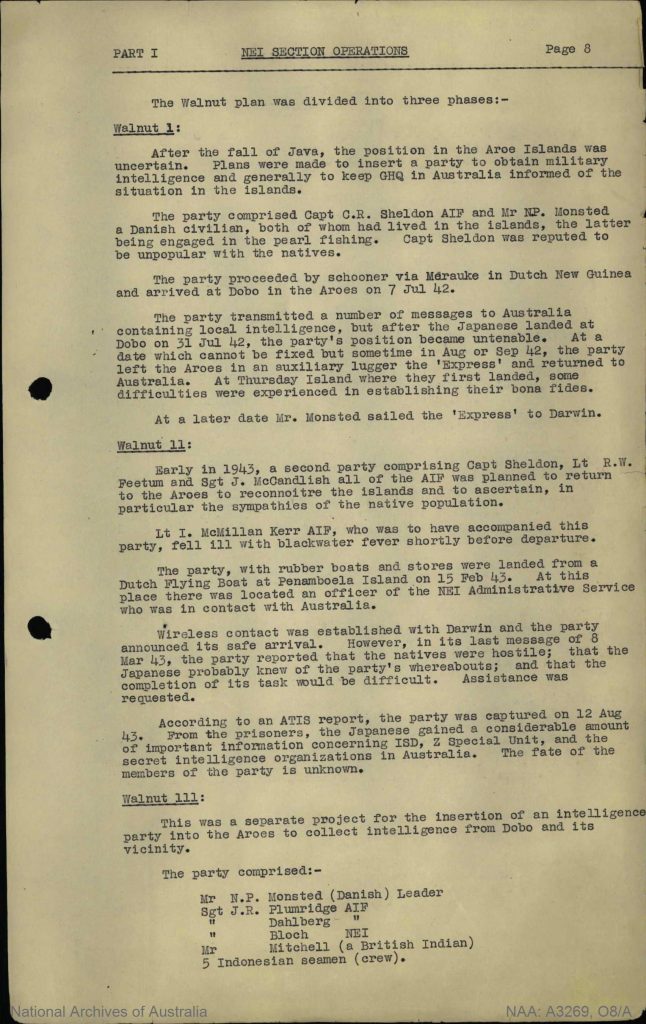
Operation Oaktree
Operation Oaktree took place in Dutch New Guinea. Under the command of Captain Jean Victor de Bruijn, some 40 Dutch and Australian soldiers operated in the highland region of Western New Guinea for more than two years between December 1942 and July 1944.

Return to the Netherlands East Indies
In 1945 the NEFIS was reorganised so that after the Japanese capitulation the service could form the new security service in the NEI In September and October 1945, the NEFIS was transferred from Camp Columbia (Brisbane) to the NEI and was established in Batavia on Java.
After a chaotic start, the service in the NEI started collecting information about the new local political groups. The intelligence service played an important role during the transition period as well as Indonesia’s later war of independence. In 1948, the NEFIS merged into the new overarching Central Military Intelligence Service. This service came directly under the command of Commander-in-Chief General Spoor. It would eventually have had a short existence in view of the soon-to-be-followed transfer of sovereignty. The director had become Lieutenant Colonel G.L. Reinderhoff, who would transfer to the Royal Netherlands Army after the transfer of the NEI to the new Republic of Indonesia. Back in the Netherlands Korps Insulinde grew into today’s modern Korps Commandotroepen.
Notable members
- Charles Bartelings (in Dutch)
- Rudy Albert Blatt, assistant to Simon Spoor (in Dutch)
- Wim van Bolten, head of the NEFIS
- Hendrik Johan de Haas, executed by the Kempeitai (Japanese Military Police) in 1945
- Leon Jungschläger (in Dutch)
- Cornelis Nagtegaal (in Dutch)
- Gerard Leonard Reinderhoff (in Dutch)
- Pete Reimer (in Dutch)
- Julius Tahija, leader of a NEFIS-III party
- Abraham de Jong (in Dutch)
- Simon Spoor, director of NEFIS
- Mans Dijkema, third wife of Simon Spoor. She was a member of the KNIL Women’s Corps, whom Spoor had met in 1942 at NEFIS, she independently acted in several military functions.
- Dominggus Wattimury, Sergeant 1st Class, member NEFIS III, participated in Firetree Party. He is also mentioned in the pdf below.
- Wilhelmus Marius van der Veur, lieutenant, member NEFIS III, in charge of supply and in charge of setting up a camp in Merauke.
- Captain Max Horstink– Topographic services
- Jean van Schilfgaarde – secretary at NEFIS Camp Columbia, Brisbane
- Joan McConachy – secretary (possibly at NEFIS)
List of Dutch WWII Commandos in Australia. Most of them have since passed away.
Any information on these veterans would be welcomed by Cees Beyer (c.e.abeyer@home.nl)
Paul Budde based on sources from Australian War Memorial, Wikipedia and the NIOD Institute for War, Holocaust and Genocide Studies in the Netherlands
See also:
The Battle of Timor – 1942-1943
Sparrow Force – Allied guerrilla force in Timor WWII
The Free Dutch vs the Emperor in the East Indies
‘Zakheus Pakage and His Communities’ (interesting details of the Oaktree Party pages 56-82)
